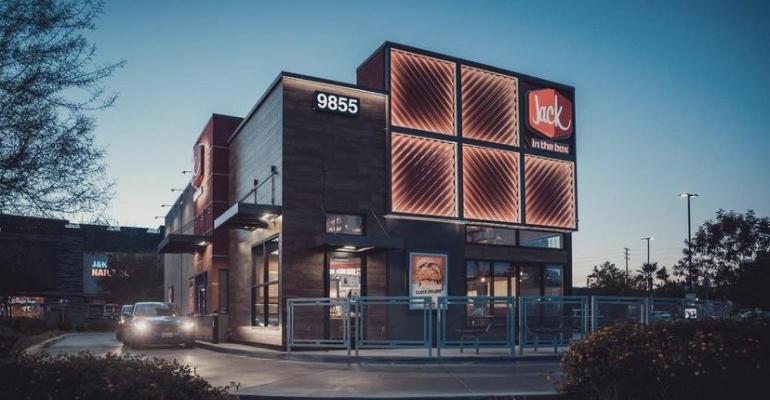During Jack in the Box’s fourth quarter earnings call last week, CEO Darin Harris reiterated that development is critical to the company’s story. It has been since mid-2021, when Jack relaunched a franchise development program after a decade-long break.
Since then, the company returned to net unit growth for the first time in four years and has signed a total of 90 agreements for 389 restaurants, including market entry next year into Mexico, Florida, Arkansas, Montana, and Wyoming. Harris is optimistic about these entries thanks to the early performance of the Salt Lake City and Louisville, Ky., markets — the first new market openings for the brand in over 10 years.
The four open restaurants in those two new markets — all in the brand’s new, tech-forward Crave image prototype — are currently averaging over $100,000 in weekly sales, which is exceeding executives’ expectations thus far. For context, according to the company’s latest FDD, the average unit volume of a Jack in the Box restaurant is a little over $1.8 million. The plan is to have 15 locations open in Salt Lake City and five in Louisville by fiscal year 2025. Jack also just signed an existing franchisee to help further develop Louisville.
“We’ve put together a specific playbook of how to enter the market — everything from operations, how we’re going to build awareness before and after coming to the market, how we want to ramp up into digital sales and late-night sales and without any LTOs,” Harris said.
On the digital sales side, for example, one of the new restaurants in Salt Lake City recently turned on digital, which led to a 16% increase in sales “overnight.”
“We’re going to pace ourselves into these markets, but we’re very excited about the way we’ve entered it. We are excited about the playbook that we’ve used to enter the markets and we’re going to continue to look for new opportunities like this,” Harris said.
During 2023, Jack opened 20 new restaurants and closed 15, marking the company’s first positive net new unit growth since 2019. There are now just under 2,190 restaurants in the domestic system, with 77 in the design, permitting and construction phases. Approximately 25 to 35 restaurants are expected to open in fiscal 2024. With these openings, the company is leaning on what it calls its “value engineering” program aimed at reducing development costs that have been hindering the entire industry. Some of that reduction comes from the smaller prototype. Harris said the payback target is under 5 years, regardless of higher costs to build.
“It’s really going to be dependent on sales and what it costs to build … and we’ve seen some of that escalate cost-wise and we’ve brought that down into 2024. We think that’ll help our returns,” Harris said. "We’ve seen outperformance in all of our openings … north of $2 million in the stores we’ve opened. So, we think we’re in a place to continue to attract franchisees to grow, even in this environment.”
White space is becoming more critical as most of Jack in the Box’s restaurants are in California and the company is bracing for impact from AB 1228, which will raise the hourly minimum wage in the state to $20 beginning April 1. Executives expect the increase could impact menu prices by 2-to-3%. However, executives are also focused on “reaching customers in the right way,” such as the through operational improvements – speed of service is down by 9 seconds year-over-year, for instance – and adding new products, including breakfast and value offerings.
“We’ll make sure we have the right offers for those that are looking for checks under $8, in addition to focusing on how we continue to bring back breakfast,” Harris said, noting the morning daypart was the slowest during the most recent quarter because the company removed menu items.
“We were simplifying the menu and, although it was good for margins, it hurt sales,” he said.
“Anywhere we can create more efficiency within the stores, whether that’s labor or food cost, will also help reduce the need to increase price as well,” CFO Brian Scott added. “We’re really excited about the innovation in our menu and making sure our consumers want to come to us. We feel very confident we can continue to drive improved traffic.”
To recap Q4, Jack in the Box’s system same-store sales growth was 3.9%, driven by a 7.6% increase in pricing and partially offset by a decrease in transactions and negative mix due to fewer drink attachments and items per check.
Contact Alicia Kelso at [email protected]

